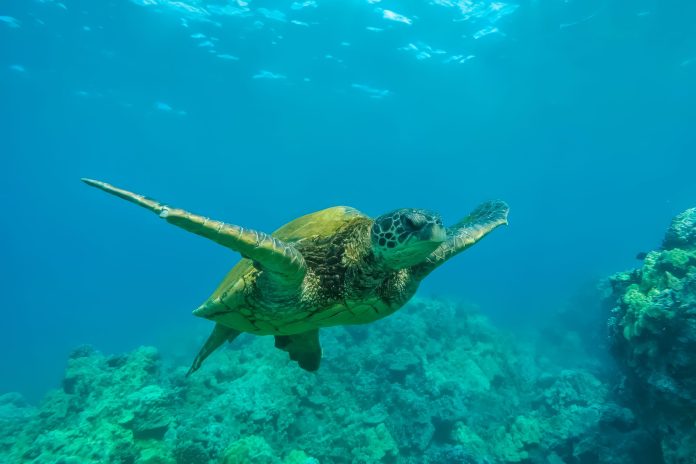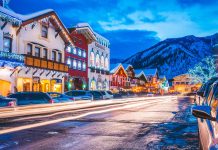Who loves Hawaii? If you do, then get able to dive into these fun facts about Hawaii and its unique culture, geography, and history. Did you realize it’s home to the tallest mountain on this planet or that it has two official languages? Let’s get into these and more. Plus, the state flower, the yellow hibiscus, is officially recognized and loved because the symbol of the Hawaiian islands.
Fun Hawaii Facts
Sitting alone in the midst of the Pacific Ocean, Hawaii is the one state that may claim Oceania as its home. It became the fiftieth state on August twenty first, 1959, on a warm summer day. This chain of islands has the history of Polynesian explorers who set sail across the open ocean and landed on its shores about 1,500 years ago.
Hawaii is often called the birthplace of browsing, a sport that has since spread to thousands and thousands of individuals all over the world. But Hawaii has so rather more than simply its famous waves. Its isolation and uniqueness are a story unto themselves, a spot where every visit reveals one other layer of its awesomeness. Get able to be weirded out by the weird, interesting, and strange Hawaii.
1. Hawaii’s Unique Geography

Unlike anywhere else on the planet, Hawaii is a world of extremes and natural wonders. As probably the most distant island chain on the planet, it’s 2,000 miles from the closest landmass. This isolation has created a world of ecosystems. Imagine walking through a rainforest and finding yourself in a desert in minutes. Picture the valleys that come alive with every step and the waterfalls that pull you in with their beauty. Each ecosystem has its own wildlife, so each time you explore, it’s a recent adventure. With its diverse landscapes and palm trees, Hawaii is a tropical heaven.
On Kauai there’s a law that no constructing may be taller than the palm trees to preserve the island’s natural beauty and forestall luxury condos and skyscrapers.
Mauna Kea, the world’s tallest mountain, is a manifestation of nature’s power. One of the good facts about Hawaii is that Mauna Kea is a mountain. The Big Island, as we call it, is one in every of the 8 primary islands that has an adventure for each form of traveler. Whether you wish to hike an energetic volcano or discover a secret beach, Hawaii has something for everybody. I remember standing at the sting of a crater, feeling the warmth from the earth below, and realizing this land was alive in ways I had never imagined. It’s a spot where nature’s power and sweetness coexist, a land that’s dynamic and enchanting.
2. The Hawaiian Archipelago

With 132 islands, including many small islets and reefs, the guts of the Hawaiian Archipelago is in its eight major islands that tell the story of Hawaii. Each island has its own personality. Take Kauai, the Garden Isle, with its dramatic cliffs and emerald valleys which can be almost alien. Oahu, the Gathering Place, has busy shores and culture. Maui, the Valley Isle, has sacred landscapes that demand introspection and wonder. And then there’s the Big Island, where recent land is born from fire and always changes with nature.
In the northwestern Hawaiian islands you will discover Mount Waialeale on Kauai where the heavens dump almost 400 inches of rain a yr, one in every of the wettest places on earth. As we sail through the North Pacific we’re reminded of the brave Polynesian explorers who got here to those islands guided only by the celebs and the ocean and shaped the material of Hawaiian culture today. The volcanic islands’ story is one in every of survival and magic, where past and present come together to create something truly Hawaiian.
3. Hawaii Volcanoes National Park

Deep within the Big Island’s wilderness, the Hawaii Volcanoes National Park exposes the inner workings of the earth to the world. This park has been around for over 100 years and is greater than a tourist attraction; it’s a sacred place, a living laboratory where creation and destruction collide. Here, you’ll find Kilauea, probably the most energetic volcano on the planet, and Mauna Loa, the biggest volcano above ground on the planet – each still shape the Big Island with their lava flows.
The park spans over 323,000 acres from sea level to the summit of Mauna Loa and gets about 2 million visitors a yr who come to see an energetic volcano and life emerging from the ashes. It’s a spot where you’ll be able to really get a way of what ‘pele’ the Hawaiian goddess of fireplace means and her ongoing effect on the islands. The ongoing eruptions of Kilauea, which began in 2021, are a reminder the Big Island remains to be growing, adding recent land to its shores every yr.
4. Tallest Mountain within the World

Besides having the world’s most energetic volcano, Hawaii can also be home to Mauna Kea, the tallest mountain on earth when measured from its base on the ocean floor. This mountain rises 13,800 feet above the Pacific Ocean but its true height is 33,500 feet when measured from the ocean floor, dwarfing even Mount Everest.
Sometimes snow-capped, the summit of Mauna Kea is a surreal landscape against the tropical surroundings. It’s where scientists come to gaze into the universe through powerful telescopes and where ancient Hawaiians looked as much as the heavens and regarded it a sacred realm of the gods. The mountain is imposing and delightful and a reminder of the island’s volcanic birth and ongoing evolution.
5. Two Official Languages
Hawaiian language, the language of the islands, is spoken throughout the islands and is one in every of the 2 official languages of Hawaii, together with English. This language was once banned by the US territorial government and has had a renaissance; it’s the spirit of the islands and the people. The language’s resurgence is a testament to the strength of Hawaiian culture, bridging the past to the current and ensuring the stories, traditions, and wisdom of our ancestors proceed to survive.
Knowing and speaking Hawaiian gives you a deeper connection to the land and its rhythms, in addition to the harmony between the people and the land. It’s a language that embodies the islands, from the gentle trade winds to the mighty ocean waves. Hawaiian just isn’t only a language but a vessel for the aloha spirit, a way of community, and respect for all life.
6. Hawaiian Alphabet
With only 13 letters, the Hawaiian alphabet is easy and to the purpose. 5 vowels and eight consonants and the unique okina, a glottal stop that provides the language its rhythm. Officially recognized as a letter in 1864, the okina is represented by an apostrophe and is used to tell apart between words that may otherwise be the identical.
Vowels in Hawaiian may be lengthened with using macrons or kahako, adding one other layer to the attractive language. The alphabet’s structure, with vowels first, speaks to the language’s history and its importance in preserving our cultural identity. It’s a language that sings of our islands’ history, from the old Hawaiian chants to the trendy hula, telling the story of people who find themselves connected to the land.
7. Hawaii’s State Fish

Among all of the marine life in Hawaii’s waters, the Humuhumunukunukuapua?a stands out. With a reputation as colourful as its scales, this reef triggerfish, also the Hawaii state fish, can grow as much as 10 inches long and may change its color to mix in with the coral. With a stout body and rough scales, it’s built for navigating the rock crevices of the ocean floor.
The Humuhumunukunukuapua?a just isn’t only a master of disguise but additionally a fierce protector of its territory, using its blue teeth to fend off intruders. Its secondary spine, or trigger, allows the fish to latch onto reef edges, giving it stability within the moving waters. The name, meaning “fish with a pig’s snout,” refers to its unique shape and the snorting sound it makes when taken out of the water. It’s a creature that’s Hawaii itself, with a reputation that’s as much an element of Hawaii because the fish is.
The yellow hibiscus, Hawaii’s state flower, also holds significant cultural importance, symbolizing the unique heritage and traditions of the islands.
8. Endemic Species

Because of its isolation, Hawaii has developed an incredible array of endemics, rivaling the Galapagos Islands. Among these native treasures are the Hawaiian hoary bat and the Hawaiian monk seal, each endangered and symbols of the island’s delicate balance. The hoary bat with its silver grey fur flies the twilight skies, and the monk seal, with its big eyes, lounges on the sand.
Saving these species is essential to conservation efforts as they’re threatened by habitat loss and human development. These creatures are greater than just inhabitants of the islands, they’re a part of Hawaii’s soul, each playing a job within the intricate web of life that thrives on this tropical heaven. Saving these endemics just isn’t nearly biodiversity but additionally about honoring a land that has evolved in isolation.
9. Stunning Beaches and Unique Sands

The dreamy beaches of Hawaii, each with its own magic, draw sun worshipers and adventurers. From the emerald green sands of Papak?lea Beach, coloured by the mineral olivine, to the iron-rich red sands that paint the shores in rusty hues, Hawaii’s coastlines are a murals. These sands tell the story of the islands’ volcanic past, each grain a whisper of ancient eruptions and the facility of nature.
While many beaches have the classic white sand of tropical getaways, Hawaii has more to supply. Hawaii’s sand is varied. You’ll find beaches with calcium carbonate sand, which comes from marine life and offers that white sand look. But you’ll also find quartz-based sand, which is more common elsewhere. Some beaches even have unique origins, like Kauai’s sea glass beach, which was formed from discarded bottles. That’s what makes Hawaii’s beaches so special.
Waikiki Beach, one of the famous beaches on this planet, has had its sand brought in from elsewhere resulting from erosion.
10. No Snakes Allowed
To protect its unique ecosystem, Hawaii bans snake ownership. These slithery creatures can be a threat to the native bird population, competing for food and habitat with no natural predators to maintain their numbers in check. It’s a policy born from the necessity to preserve the fragile balance of life that has thrived here for hundreds of years.
Those who break the foundations face serious consequences, with fines as much as $200,000 and three years within the slammer. But the state also shows understanding and mercy with its amnesty program, where you’ll be able to give up your pet snakes without fear of prosecution. It’s a nod to the respect for nature that’s a part of Hawaiian culture and the collective effort to preserve our ecological legacy.
11. Hawaii’s Royal Palace

The Iolani Palace in the guts of downtown Honolulu is a royal legacy. Built in 1882 by King Kalakaua, this palace is the one royal residence within the United States. It’s like stepping back in time. Once the federal government and social center of the Hawaiian Kingdom, the palace saw the top of the monarchy in 1893 and served in various government roles before being restored to its former glory.
When you visit Iolani Palace, you’ll be able to walk the grand hallways, see the royal suites with original furnishings and artifacts, hear the echoes of royal footsteps, and picture the balls and state functions that after filled these rooms with life. As a National Historic Landmark, the palace is a window into the past of the islands, a bridge between the old Hawaii and the brand new.
12. Hawaii’s Own Time Zone

Time in Hawaii moves to its own beat within the Hawaiian Standard Time zone. 2 to three hours behind Pacific Standard Time and no Daylight Savings Time, the clocks here tick to a unique drum. This time zone just isn’t just a mirrored image of the geographical distance from the mainland but additionally the laid-back lifestyle of Hawaiian culture.
The concept of ‘island time’ isn’t only for tourists; it’s real, and you’ll be able to feel it as soon as you step off the plane. No have to ‘spring forward’ or ‘fall back’ means life here is regulated by the natural cycles of sunrise and sunset relatively than the clocks that govern the remaining of the world. It’s a mild reminder that in Hawaii, time is valued in another way, and moments are savored, not rushed.
13. Aloha State Nickname

Hawaii is often called the Aloha State, and the name says all of it. ‘Aloha’ is a word meaning hello or goodbye but goes a lot deeper into the Hawaiian culture. Beyond its on a regular basis use, ‘aloha’ means loving and respecting others and the land itself. The Aloha Spirit is so ingrained within the Hawaiian lifestyle it’s been written into law since 1986. It’s an ethic that requires individuals to contemplate others and the land in all they do and creates a society that thrives on care and respect.
When you hear ‘aloha’ here, you’re being given a slice of the islands. Join the cuddling.
14. Famous Filming Locations

15. President Barack Obama’s Birthplace
Along with its natural beauty and cultural importance, Hawaii is the birthplace of many notable people, including Barack Obama, the forty fourth President of the United States. Born on the beaches of Honolulu, this island boy grew as much as be president and sometimes talks in regards to the years he spent within the Aloha State. The Hawaiian way, with its ohana and maluhia, is how Obama carried himself during his presidency and beyond.
The islands have also produced talents like Bette Midler and Nicole Kidman, each adding to the tapestry of Hawaii’s history. The Hawaii effect, with its mixture of cultures and natural beauty that sparks creativity, may be seen of their lives and work. It’s a spot that feeds the soul and offers you a unique view of the world – an influence that goes far beyond the islands.
Did You Enjoy These Hawaiian Facts?

As we wrap up our Hawaiian Islands journey, we reflect on the magic and variety that makes Hawaii so special. From the highest of Mauna Kea to the rhythm of the Hawaiian language, the facts we’ve shared are only a small peek into this tropical paradise’s soul. The islands are a treasure trove of natural beauty, cultural depth, and historical significance, each of which is a thread in the colourful fabric of Hawaii.
We’ve uncovered the secrets of the Hawaiian archipelago, dived into the ocean, and stood within the shadow of the past. We’ve found that in Hawaii, time moves to its own beat, and the spirit of aloha is in all the pieces. Whether it’s the beaches, the endangered species, or the famous faces that decision it home, Hawaii still has us under its spell. May the aloha spirit stick with you and beckon you to return back and explore.
Frequently Asked Questions About Hawaii
What makes Hawaii’s beaches different from other tropical places?
Hawaii’s beaches are different due to different-colored sand, which is formed by unique geological processes and the island’s volcanic history. It is a one-of-a-kind beach experience.
Why doesn’t Hawaii observe Daylight Savings Time?
Hawaii doesn’t observe Daylight Savings Time since it’s near the equator, and there’s minimal daylight variation. So Hawaii prefers to remain on one time all yr.
Are there some other royal palaces like Iolani Palace within the US?
No, Iolani Palace in Honolulu is the one royal palace within the US since Hawaii was an independent kingdom.
How did the Hawaiian Islands get formed?
The Hawaiian Islands were formed by volcanic activity, hotspots within the Earth’s mantle pushing magma through the Earth’s crust to create these islands.
What does the Hawaiian state fish’s name, Humuhumunukunukuapua?a, mean?
The Hawaiian state fish’s name, Humuhumunukunukuapua?a, means ‘fish with a snout like a pig’ due to its snout and the sounds it makes. Pretty cool and fitting name!
Escape the ordinary and discover the extraordinary! From bustling cities to serene landscapes, every journey begins with a single step—let us guide yours. Enjoy curated itineraries, hidden gems, and hassle-free bookings designed for explorers at heart. Whether it's a weekend getaway or a globe-trotting adventure, your Next unforgettable experience is just a click away.










